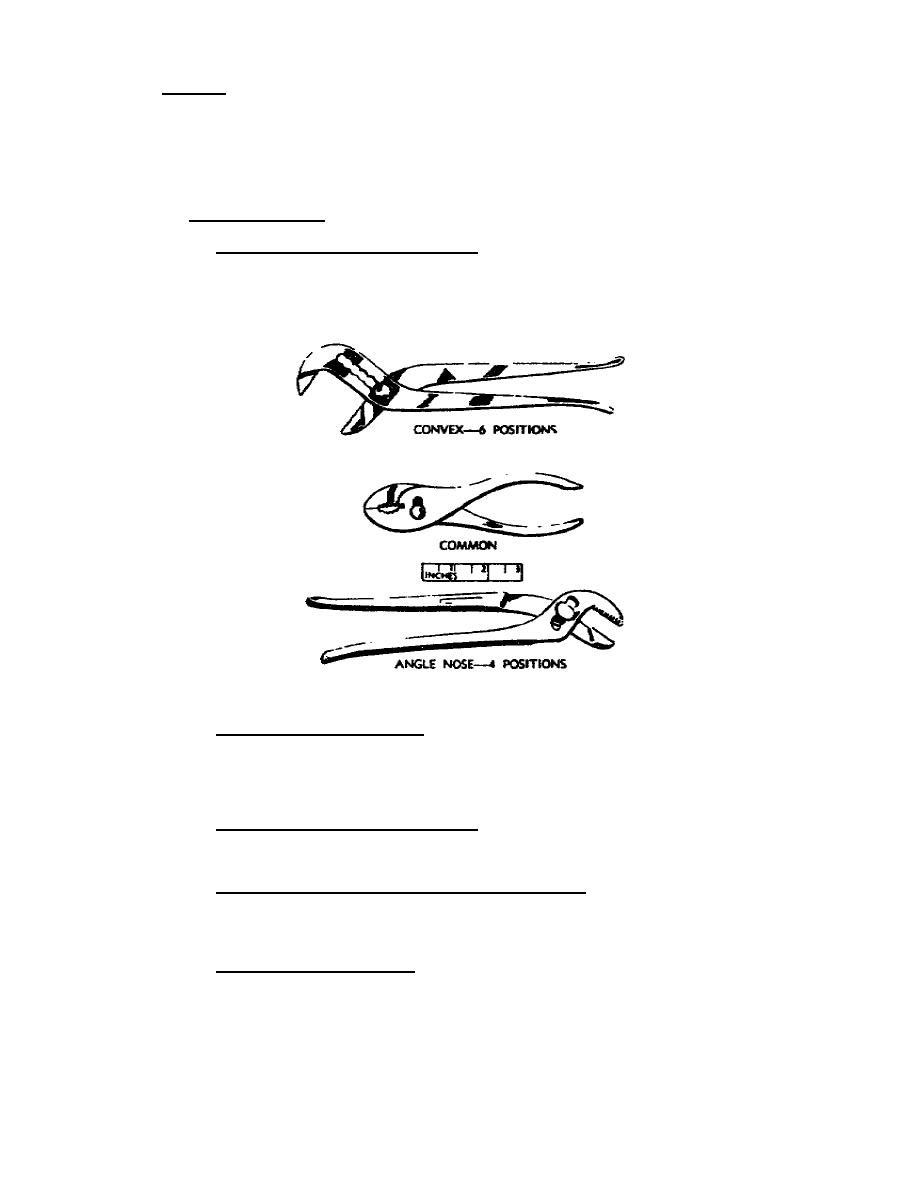
e. Pliers. Pliers are used for gripping, cutting, bending, forming, or
holding work and for special jobs. Tongs look like long-handled pliers and are
mainly used for holding or handling hot pieces of metal work to be forged or
quenched, or hot pieces of glass. Pliers basically consist of a pair of jaws
designed for a specific purpose, a pivot or hinge, and a pair of handles. They are
made in many shapes and sizes to handle a variety of jobs. The size is determined
by the overall length, which usually is 5 to 10 inches.
(1) Types of pliers.
(a] Slip joint combination pliers. The slip joint combination pliers
(fig 26) are most commonly used to hold or bend wires, small bars, and a wide
variety of miscellaneous items. Some have short cutting edges near the hinge for
cutting wire. The slip joint permits adjustment and wider opening of the jaws.
The jaws have serrations or teeth for gripping.
Figure 26.
Slip joint combination pliers.
(b) Diagonal cutting pliers. Diagonal cutting pliers (fig 27) have short
jaws with the cutting edges at a slight angle. They are used for cutting soft
wire and stock and for removing cotter pins. They are also used for cutting cotter
pins to desired length and for spreading the ends after the pin is inserted through
a hole.
(c) Lineman's side cutting pliers. Lineman's side cutting pliers (fig
27) are for cutting wire and peeling insulation. The flat serrated jaws are also
used to twist wire ends together in making splices.
(d) Parallel jaws, flat, and roundnose pliers. These pliers (fig 28)
are used to bend or form metal into various shapes and to work in limited spaces.
The nose is made in variety of widths and lengths. The parallel jaws pliers are
supplied with or without side cutters.
(e) Special purpose pliers. Some pliers are made for specific jobs such
as the brake spring pliers, glass holding and breaking pliers, ignition pliers,
battery terminal pliers, and brake key and snapring pliers (fig 29).
20




 Previous Page
Previous Page
